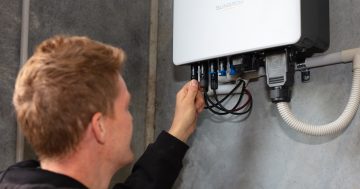 Over the past two years, working from home has become the new normal for some.
Over the past two years, working from home has become the new normal for some.
Whether set up in a dedicated office or plonked on your kitchen table, we’ve certainly been spending more time inside.
While we can’t fault the comfort of working from home (not to mention the reduced travel times), not everything is ideal.
Since we’ve been spending a lot more time at home – either full-time or on a part-time schedule – you might have noticed a steady increase in your energy bill.
So here are some easy ways to keep energy costs down while keeping your comfort level up.
We often think of items like light bulbs, televisions and plugged-in chargers as big energy drainers, but they actually contribute very little to your overall consumption.
The big players here are items with motors and heating elements: your fridge, freezer, air conditioner and water heater.
Check your fridge settings
Set your refrigerator to 3 to 4 degrees Celcius and your freezer to -15 degrees.
As long as both are full, your food will stay fresh and the motor won’t work as hard.
While you’re in the kitchen, do scrape off all the food bits from your dishes before putting them in the dishwasher, but don’t pre-wash your dishes completely beforehand.
Use less hot water
You can probably take fewer showers every week (chanced are good you’re not as active as you used to be) to save on hot water.
Wash your laundry on cold, make sure your dryer’s lint trap is clean and use dryer balls (or tennis balls) to keep drying cycles as short and efficient as possible.
Avoid using your air conditioner or heater
To save on air conditioning costs, make sure your blinds and curtains are closed on hot days.
Keep your ceiling fans clean and run them counter-clockwise on hot days to pull cool air up, while minimising the use of your cooling units.
On the flip side of this, you’re better off rugging up in a few extra layers of clothing instead of blasting your heater when it’s cold.
Check your current energy rates
Another way to save on electricity costs is to make sure you’re not overpaying with your current provider.
The best way to do this is to compare your current costs to other providers in your area.
*Joel Kahn is Senior Video Producer at Lifehacker.
This article first appeared at lifehacker.com.au.











